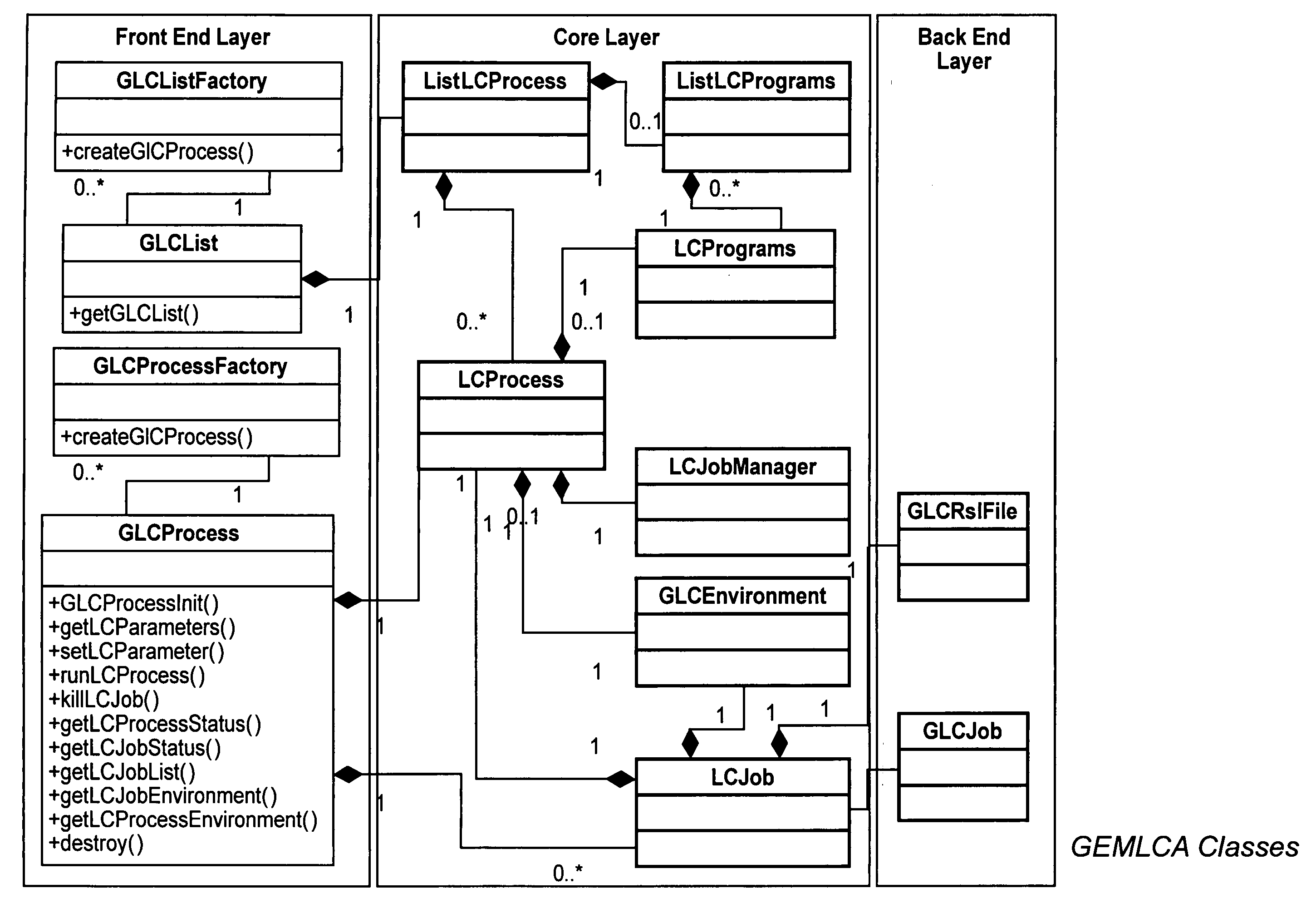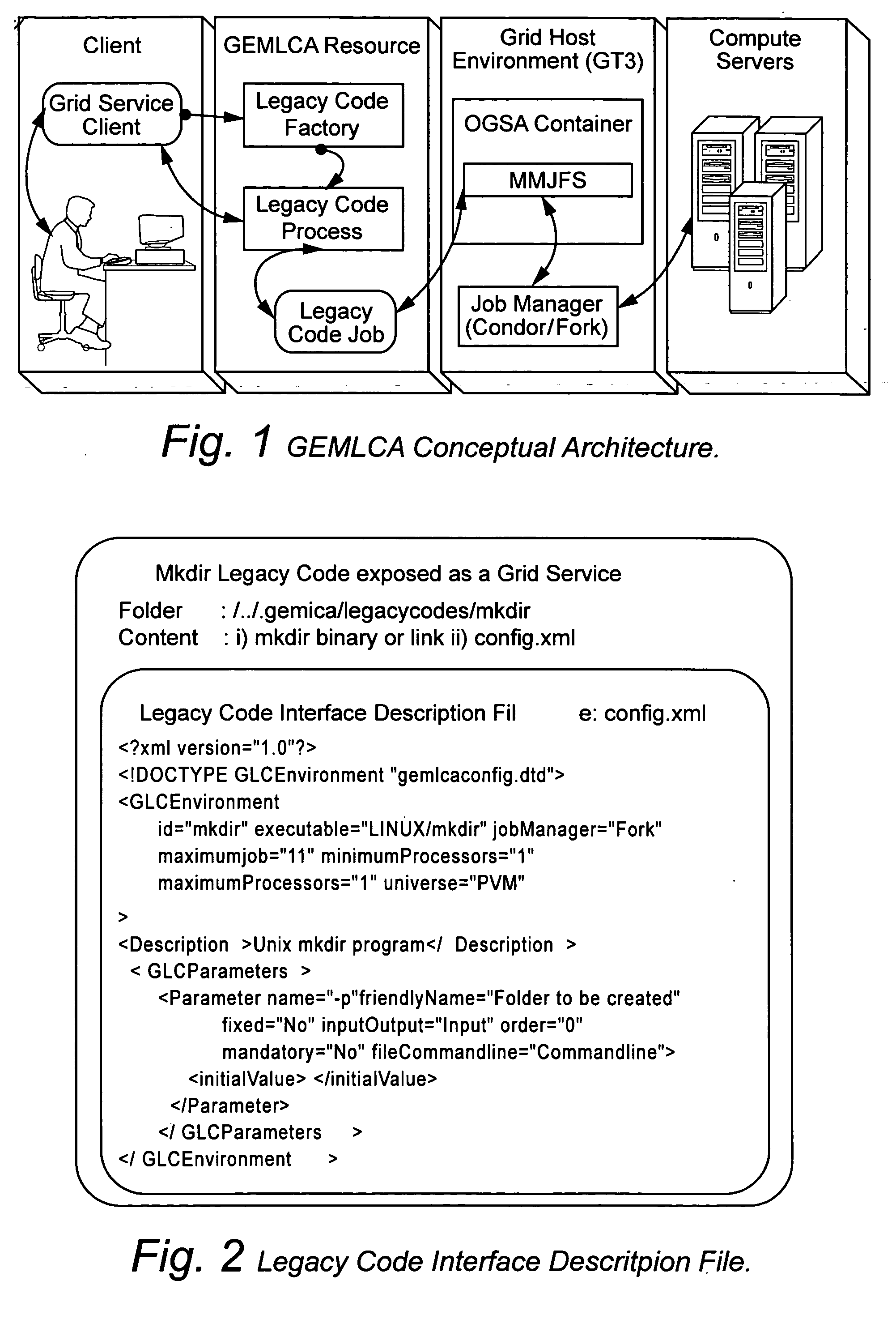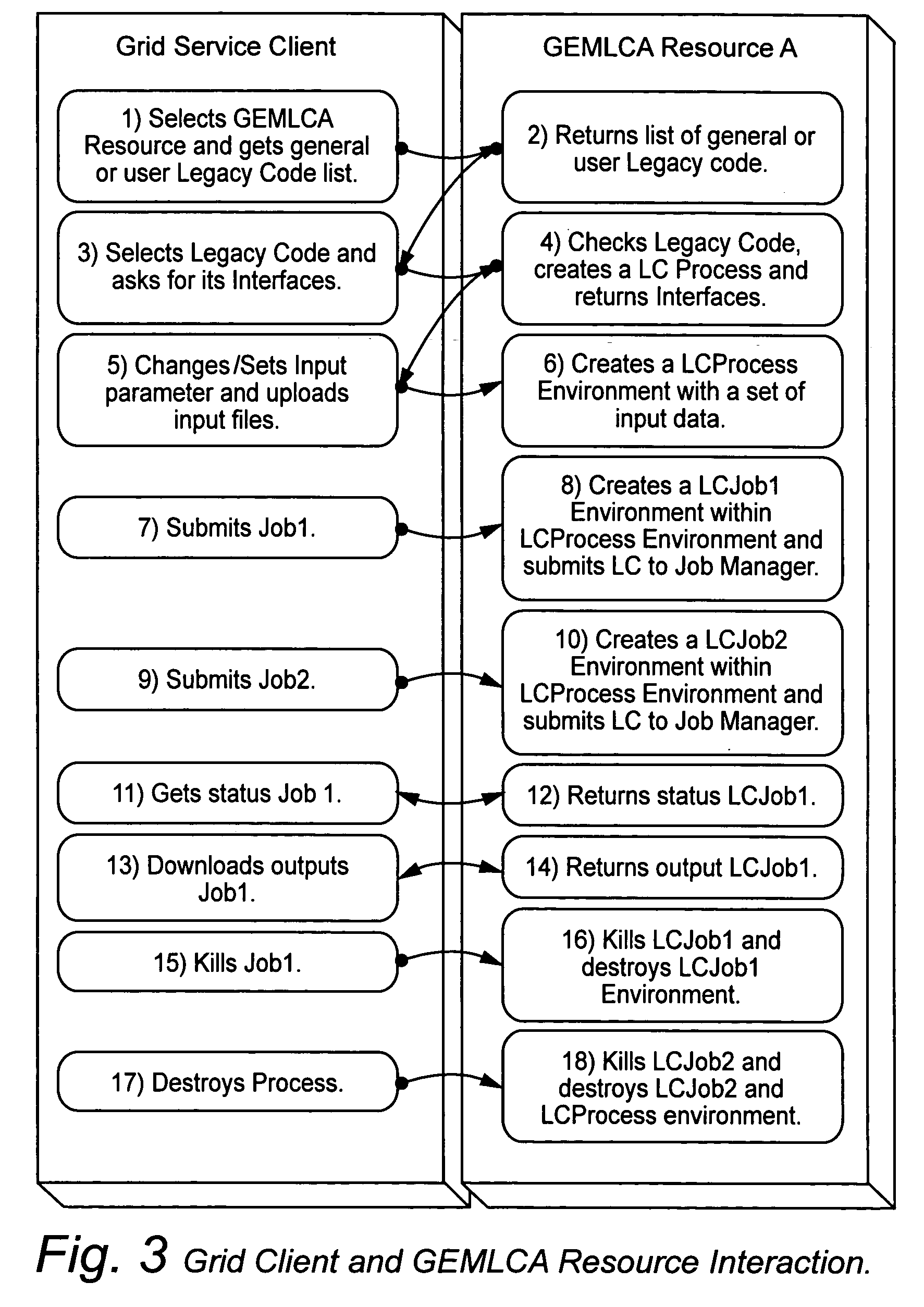Services for grid computing
a grid computing and service technology, applied in the field of grid computing, can solve the problems of large amount of legacy code that is not accessible, requiring significant re-engineering of original code, and difficult deployment of these programs in a grid environmen
- Summary
- Abstract
- Description
- Claims
- Application Information
AI Technical Summary
Benefits of technology
Problems solved by technology
Method used
Image
Examples
example
[0097] Urban Car Traffic Simulation
[0098] The invention described above was demonstrated by deploying a Manhattan road traffic generator, several instances of the legacy traffic simulator and a traffic density analyzer into Grid services. All these legacy codes were executed from a single workflow and the execution was visualised by a Grid portal. The workflow consists of three types of legacy code components:
[0099] 1. The Manhattan legacy code is an application to generate MadCity compatible network and turn input-files. The MadCity network file is a sequence of numbers, representing a road topology, of a real road network. The number of columns, rows, unit width and unit height can be set as input parameters. The MadCity turn file, is a sequence of numbers representing the junction manoeuvres available in a given road network. Traffic light details are included in this input file.
[0100] 2. MadCity [A. Gourgoulis, G. Terstyansky, P. Kacsuk, S. C. Winter, Creating Scalable Traffi...
PUM
 Login to View More
Login to View More Abstract
Description
Claims
Application Information
 Login to View More
Login to View More - R&D
- Intellectual Property
- Life Sciences
- Materials
- Tech Scout
- Unparalleled Data Quality
- Higher Quality Content
- 60% Fewer Hallucinations
Browse by: Latest US Patents, China's latest patents, Technical Efficacy Thesaurus, Application Domain, Technology Topic, Popular Technical Reports.
© 2025 PatSnap. All rights reserved.Legal|Privacy policy|Modern Slavery Act Transparency Statement|Sitemap|About US| Contact US: help@patsnap.com



